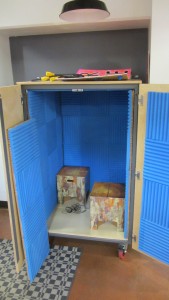So… the wider community has realised that making things is often a valuable educational experience. So how do schools respond?
Well… some schools determine that they should be “doing makerspaces” and set up a facility with various bits of hardware and tools to let students create things. But without some curriculum context, this can become the “wooden shoe-cleaning box” made by countless students over the years in woodwork classes, that is, another situation where every student creates the same thing with no real purpose other than to learn the specific skills in making that thing. This leaves the process as devoid of curriculum relevance as the subjects it replaced.
The evidence so far suggests that makerspaces in schools work best when seen as a tool to assist the design process, that is to help solve a real problem, rather than as an add-on or after-school part of the curriculum.
The water has been muddied by terminology, as names such as makerspaces, hackerspaces, fablabs. etc have been used interchangeably by some.
 |
 |
photo – talk box (audio recording box) at Stanford dschool
